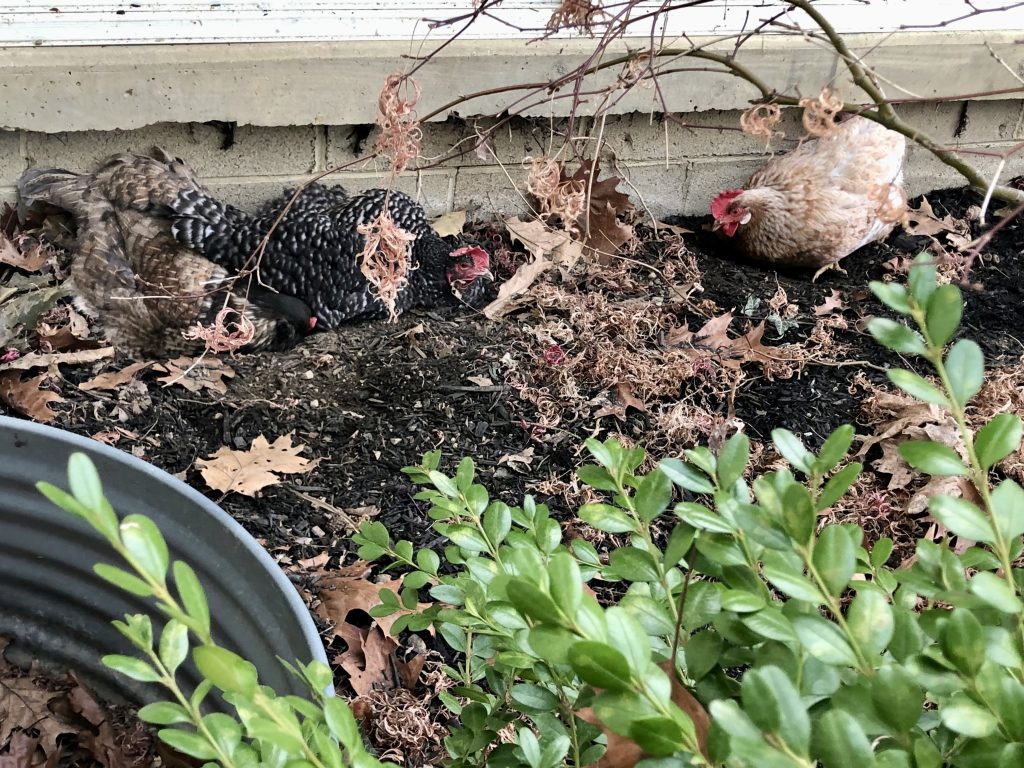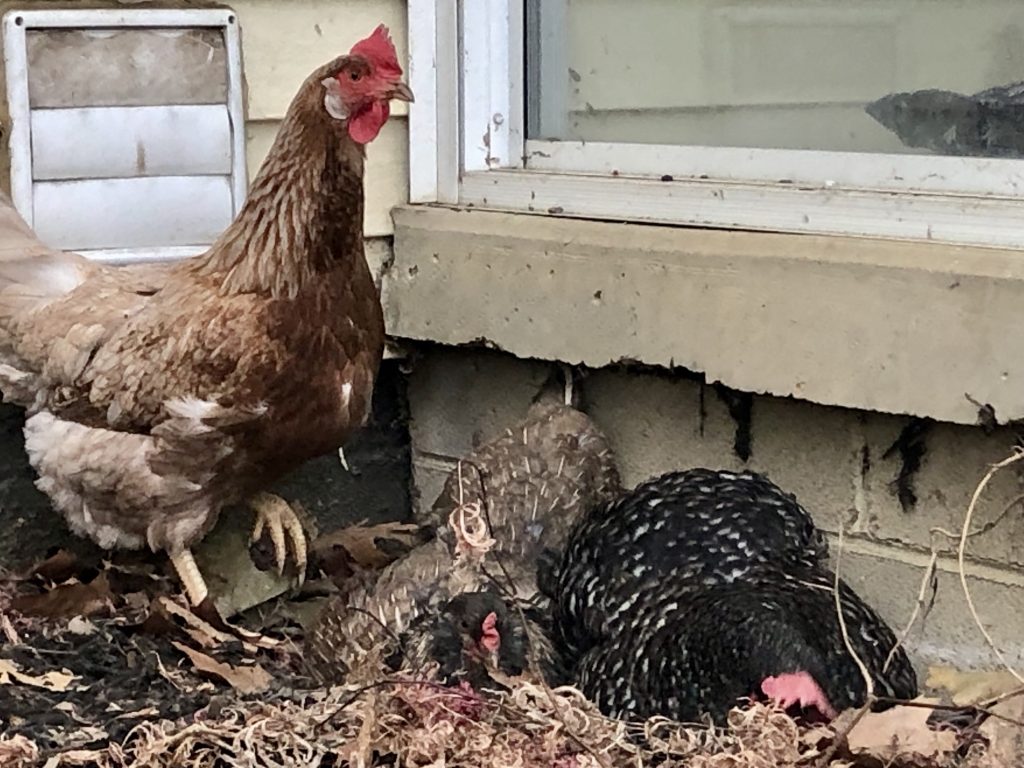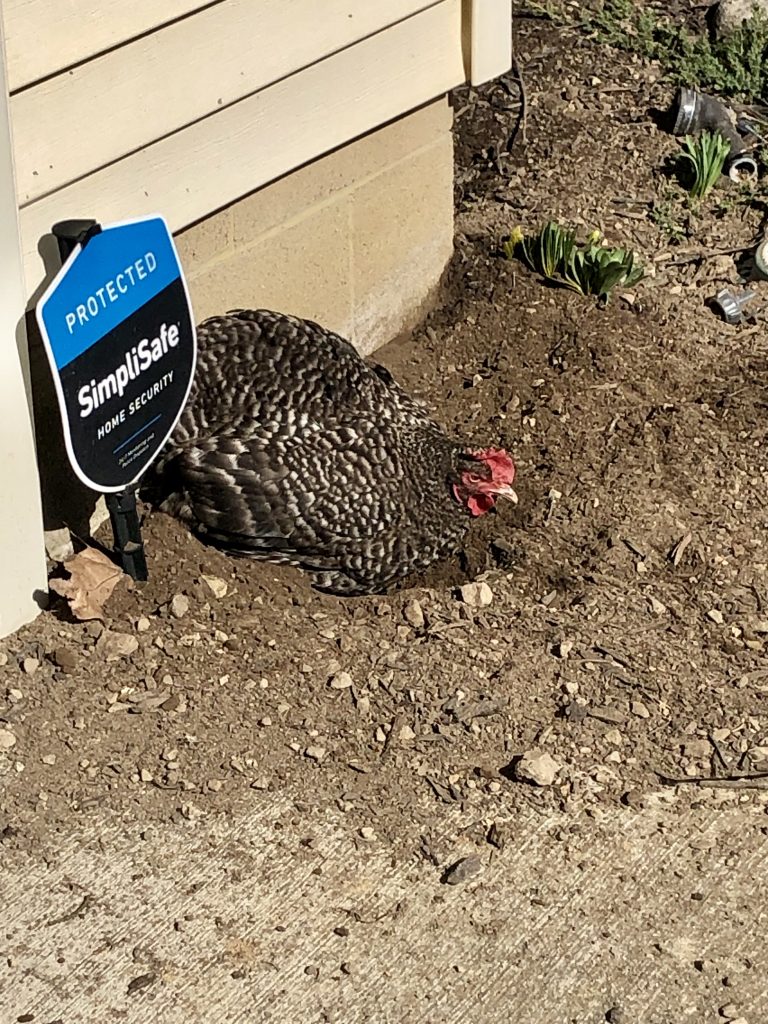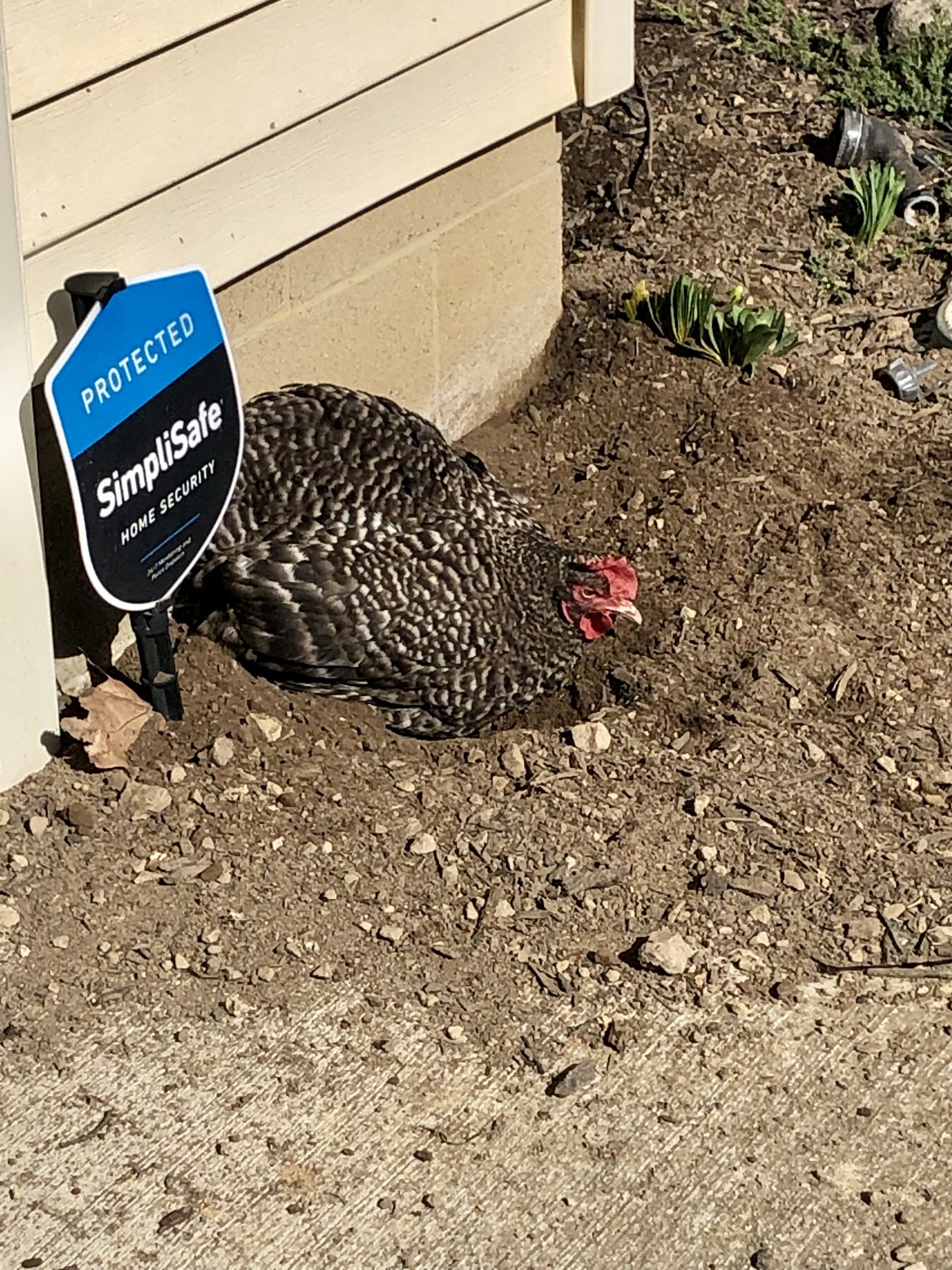Today was a reasonably warm (for February) day. I was outside measuring maples and black walnuts to see which trees I’ll be able to tap this season, so I let the chickens out of their run for a bit of supervised free range time. There’s too many hungry hawks around – especially now when food is scarce – for me to let them free range as much as they’d like.
I decided to peek around the corner to the flower beds around our sunroom. There were my three oldest hens living their best life in their favorite dust bathing spot, without a care in the world for the disarray they were causing.

Rolling around in the dust seems to be an odd way to get clean. So why do they do it?
While they flap around coating themselves in loose dirt or sand, that material makes its way down through their feathers and absorbs extra moisture and oil. The process is also a natural way for them to remove external parasites like lice and mites.
They look hilariously filthy when they stand up from their bath – especially my all white silkie! But with a quick shake they look perfectly clean again!

They’ll often follow that up with preening to keep their feathers healthy and water resistant. Their preening gland is located on their lower back just above their tail, and if you watch them closely you’ll see them bringing their beak to it over and over as they apply the preening oil all over their body.
If you keep your chickens in an enclosure, make sure that they have access to loose, dry dirt or sand to dust bathe. I give my girls a few different options – they have loose dirt in both their large run and in the small enclosure under their coop, sawdust from pine pellets inside the coop (which they seem to prefer in winter), and then I also will toss in wood ash from our fire pit to the run (make sure it’s just wood ash and does not contain any harsh materials like plastics or metals).
However, if you free range even for part of the day, be prepared for them to find the least convenient spot (for you, that is) to dust bathe. They will demolish flower beds in no time if they’ve decided it’s their favorite spot and there’s not really a way to keep them out of them other than to fence in your flower beds completely, so be prepared for this if you choose to free range.

Even if my feathered goofballs wreck my flower beds, it still brings me so much joy to watch them just enjoying life and taking such pleasure from such a simple thing!

